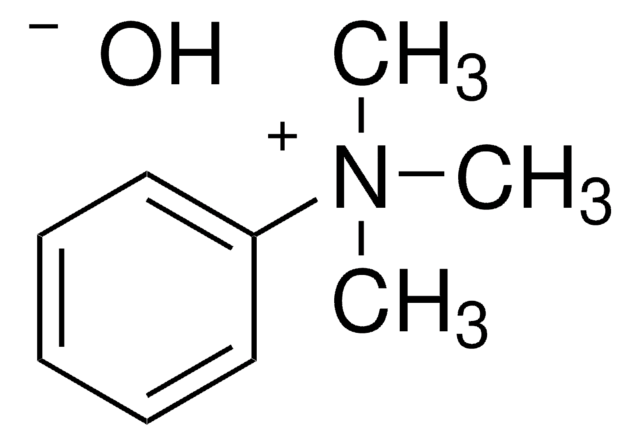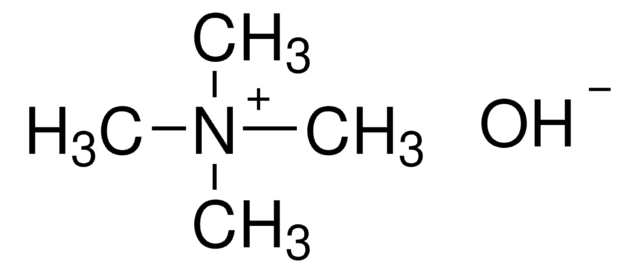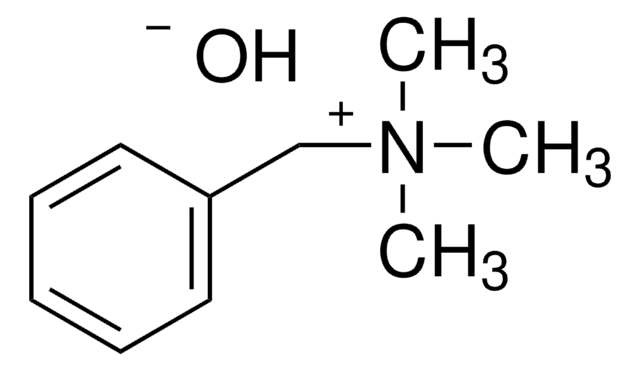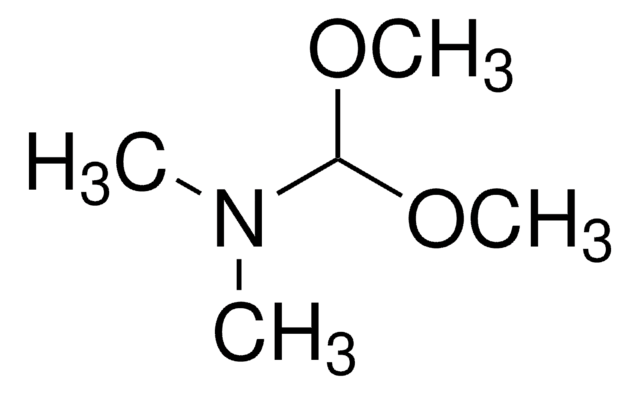79266
Trimethylphenylammonium hydroxide solution
~0.5 M (CH3)3N(OH)C6H5 in methanol, for GC derivatization, LiChropur™
Synonym(s):
Phenyltrimethylammonium hydroxide, TMAH
About This Item
Recommended Products
grade
for GC derivatization
Quality Level
form
liquid
quality
LiChropur™
reaction suitability
reagent type: derivatization reagent
reaction type: Esterifications
concentration
~0.5 M (CH3)3N(OH)C6H5 in methanol
technique(s)
gas chromatography (GC): suitable
impurities
≤0.2% halides (as chloride)
storage temp.
2-8°C
SMILES string
[OH-].C[N+](C)(C)c1ccccc1
InChI
1S/C9H14N.H2O/c1-10(2,3)9-7-5-4-6-8-9;/h4-8H,1-3H3;1H2/q+1;/p-1
InChI key
HADKRTWCOYPCPH-UHFFFAOYSA-M
Looking for similar products? Visit Product Comparison Guide
Related Categories
General description
Application
Other Notes
Legal Information
signalword
Danger
Hazard Classifications
Acute Tox. 3 Dermal - Acute Tox. 3 Inhalation - Acute Tox. 3 Oral - Eye Dam. 1 - Flam. Liq. 2 - Skin Corr. 1B - STOT SE 1
target_organs
Eyes
Storage Class
3 - Flammable liquids
wgk_germany
WGK 3
flash_point_f
51.8 °F - closed cup
flash_point_c
11 °C - closed cup
ppe
Faceshields, Gloves, Goggles
Choose from one of the most recent versions:
Already Own This Product?
Find documentation for the products that you have recently purchased in the Document Library.
Customers Also Viewed
Our team of scientists has experience in all areas of research including Life Science, Material Science, Chemical Synthesis, Chromatography, Analytical and many others.
Contact Technical Service














